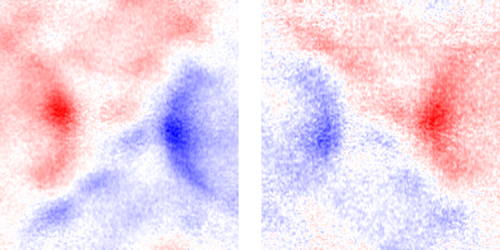• Physics 17, s53
X-ray experiments reveal that a semimetal exhibits “orbital texture”—an exotic electronic structure resulting in spin-dependent electron transport.
In 1999 researchers discovered that thin films of chiral molecules could scatter electrons in a spin-dependent way. The effect has been attributed to the material’s “orbital texture”—a spin-dependent electronic structure induced by the chirality of orbital degrees of freedom. Now Stefanie Brinkman of the Norwegian University of Science and Technology in Trondheim and her collaborators have demonstrated that a bulk chiral crystal—the semimetal cobalt monosilicide (CoSi)—unequivocally exhibits a chiral orbital texture [1]. The finding could lead to new spintronic materials.
CoSi belongs to a family of chiral semimetals that share the same low-symmetry crystal structure. Last year, a team of theorists calculated these crystals’ band structures, predicting rich orbital textures and the emergence of condensed-matter analogs of magnetic monopoles—hypothetical particles that only possess one magnetic pole. To test those predictions, Brinkman and her collaborators used a variant of angle-resolved photoemission spectroscopy. They aimed beams of left- and right-handed circularly polarized x rays at the surfaces of CoSi’s two enantiomers (two versions of the same crystal with opposite chirality) and mapped the linear momenta of the ejected photoelectrons.
Circularly polarized light is sensitive to the orientation of the electrons’ orbital angular momentum. By subtracting the map made with left-handed circularly polarized light from its right-handed counterpart, Brinkman and her collaborators found that the two enantiomers indeed exhibited orbital texture, with each enantiomer’s map being a mirror image of the other. The researchers also observed the predicted monopoles.
The spin-dependent transport needed for spintronic devices typically relies on magnetism or on spin–orbit coupling. Since orbital texture provides an additional degree of freedom that doesn’t require these two properties, it could prove an advantage in spintronic applications.
–Charles Day
Charles Day is a Senior Editor for Physics Magazine.
References
- S. S. Brinkman et al., “Chirality-driven orbital angular momentum and circular dichroism in CoSi,” Phys. Rev. Lett. 132, 196402 (2024).




